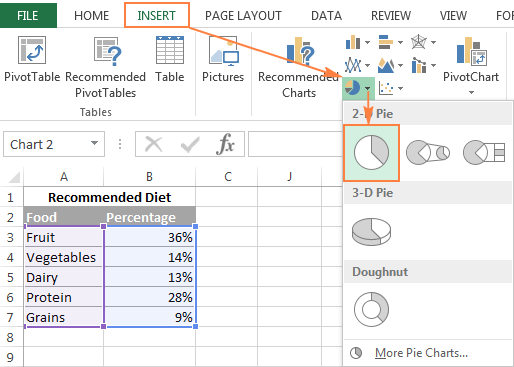


On the horizontal axis shown in Figure 13-15, we removed the labels for the 12 data points (January through December) within each year and instead used labels to identify entire years. Labels You can add labels to axes to indicate what each step along the axis represents. Legend This optional element functions as a key when a chart contains multiple data series it typically provides labels next to the color or shape used for the corresponding data series. Figure 13-15, for example, might be easier to understand at a glance if the vertical axis had “Monthly rainfall (inches)” as a title. In addition, you can add a title to any axis to help explain the data plotted along that axis.

Titles If you choose to use a chart title, you can overlay the title on the chart itself or allow the title to sit above the chart. Gridlines help you compare the values in a data series to the values on an axis. A depth axis is available for 3-D charts. Figure 13-15, for example, shows time along the horizontal axis and rainfall (measured in inches) along the vertical axis.

Three-dimensional charts have a wall, a floor, and rotation options as well.Īxes and gridlines Column, bar, and line charts typically plot data along two axes. You can use a unique color in the plot area to make it stand out from the chart background. The following list describes the main chart elements available to you in Excel:ĭata series and plot area Each series of data appears within the plot area, represented as a line, column, bar, or pie slice, depending on the chart type. With a little more data and a few more clicks, we could make this chart much more complicated, although that would defeat its purpose. With that disclaimer out of the way, we ask you to look at the simple line chart shown in Figure 13-15, which illustrates the most common chart elements.įigure 13-15 This simple line chart includes several basic elements-a chart title, a plot area (with gridlines), and two axes-horizontal and vertical. For a much more complete picture, we recommend Microsoft Excel 2013 Inside Out, by our colleagues Mark Dodge and Craig Stinson (Microsoft Press, 2013). If you’re looking for detailed explanations of the concepts behind turning information into graphics, we highly recommend starting with Edward Tufte’s seminal work on the subject (see And because space is limited in this chapter, we can only dive just below the surface in showing you the many options available when you create and customize Excel charts. In this whirlwind tour of the charting features in Excel, we focus on the nuts and bolts of actually building a chart. Everything beyond that is a matter of refinement, making the resulting chart more visually appealing and understandable, with titles and labels and color gradients and other tweaks. The process of building a chart in Excel is literally a two-step operation.


 0 kommentar(er)
0 kommentar(er)
